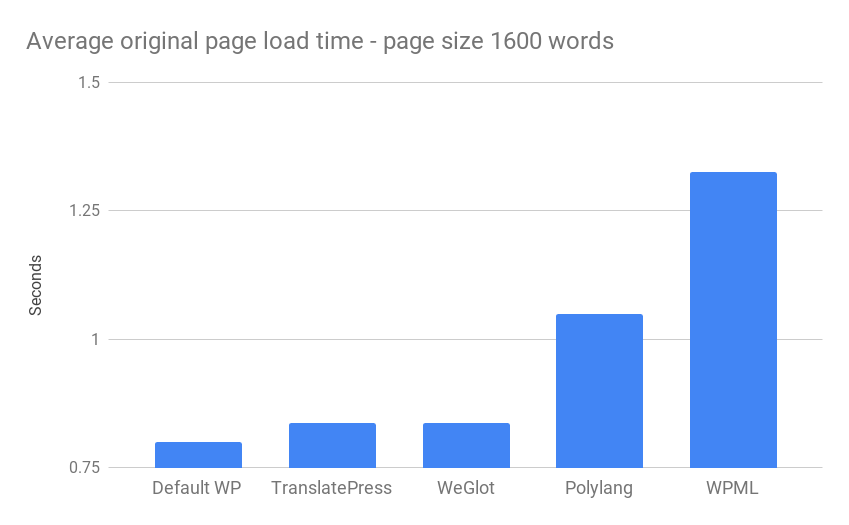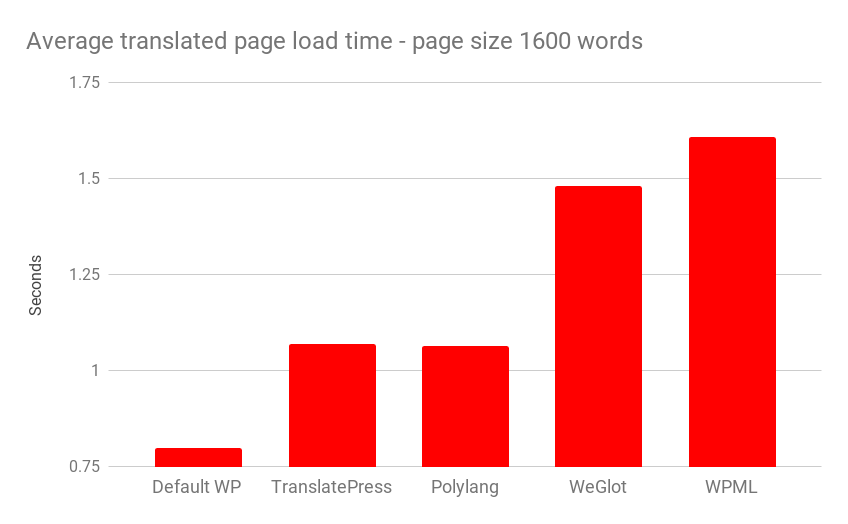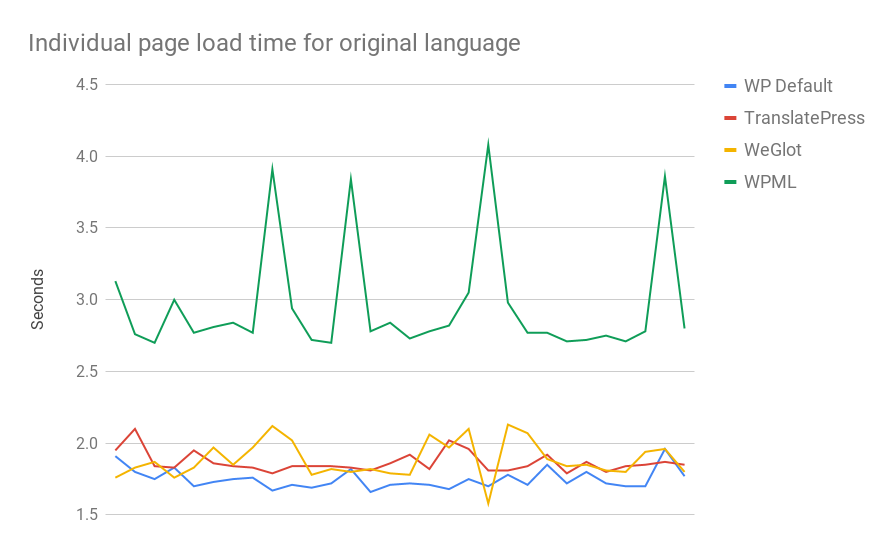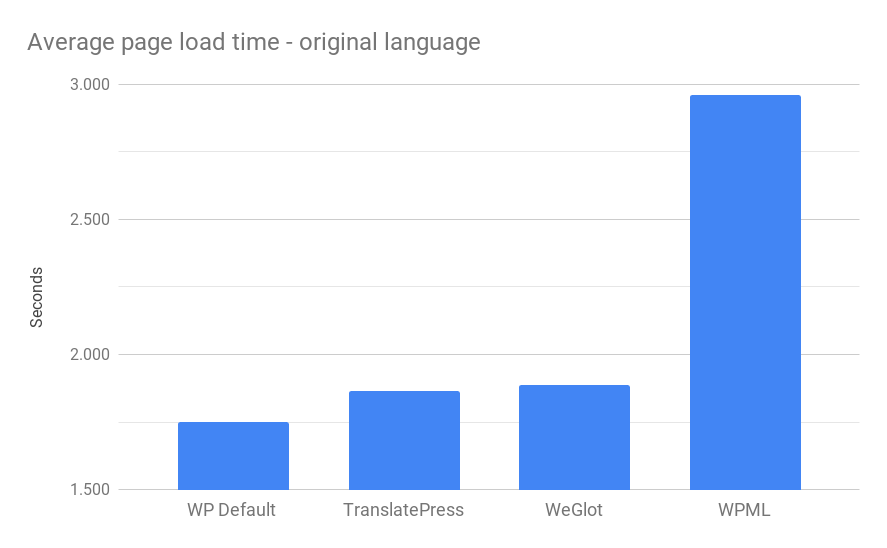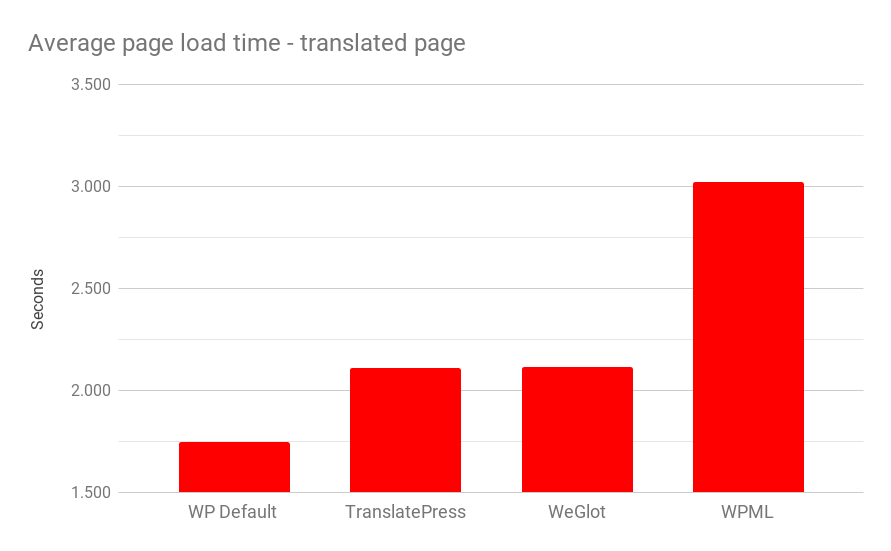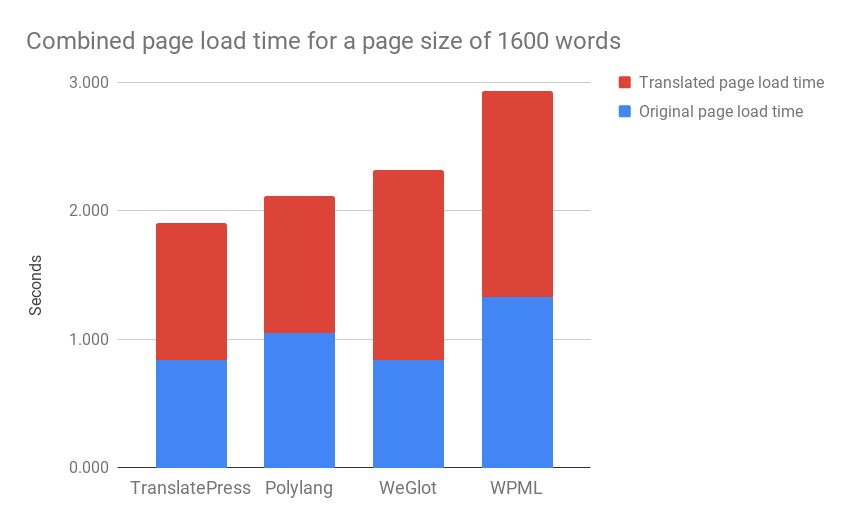✨ Professional WordPress development, custom website builder, efficient on-line, cooperate and enjoy optimization services! 🚀
A key consideration when picking a WordPress translation plugin is its impact on site speed. It's important to realize that a slow website can have a negative impact on page rank, traffic, and ultimately revenue.
So, we decided to run several speed tests on a number of popular WordPress translation plugins to give you a good idea of how much load these plugins put on your multilingual site.
We compare page load times for the same page translated using different multilingual plugins. Only one translation plugin is enabled at a time, and the translation plugins are configured accordingly for specific tests.
Translation Loading Time Consumption Analysis Based on Page Size
In the first setup scenario, we wanted to explore how page size affects translation loading time.
A page of about 1600 words was selected for this test, with the Twenty Fifteen theme enabled and no plugins other than the one being tested. The chart below shows the average raw page load time we obtained in our test.
Given the variable nature of software execution time, which is affected by parameters within human control such as CPU, operating system, network latency, etc., the page load time will vary slightly with each refresh.
To address this issue, for each plugin, we measured the page load time 30 times and then calculated the average. We used Chrome DevTools to measure load times.
We can see that TranslatePress and WeGlot's load times are quite good as they have minimal intervention in displaying the original page. polylang and WPML seem to take longer to load the page.
Keep in mind that the comparison is done on the original page (untranslated), so all plugins should show similar page load times to the original WordPress version (without any active plugins).
For the average translation page load time, the picture is slightly different.
We can see that in this test, WeGlot shows an increase in page load time when displaying a large translated page. This is probably because the WeGlot plugin uses more time resources to communicate with the WeGlot server to provide translations for such a large number of words.
TranslatePress is not affected by word count because translations are stored in a local database, so it can retrieve translations faster.
For this test, TranslatePress and Polylang had similar load times, while WPML was the slowest to deliver translated pages.
WooCommerce Store Translation Load Time
Moving on to the different test setups, each plugin was set to use the virtual WooCommerce data translation provided by Automattic Storefront Topic's homepageThe store page has a total of about 250 words. There are about 250 words in total on the store page.
The advanced version of the Translator plugin is used to efficiently translate WooCommerce products.
In the image below, you can see how each line representing the plugin changes a bit in terms of loading time (in seconds) during these 30 page refreshes.
But even from this raw results graph, you can observe a clear difference in the loading time of each plugin compared to the default loading time of WordPress (without any translation plugin installed).
If we look at the average page load time for the original page, which is the default language in which it was written, you can see that each plugin adds a little bit of load time to WordPress. translatePress and WeGlot are very close, adding only about a quarter of a second to the fairly small load time. WPML, however, seems to take a bit more time to load.
If we look at the averages when loading translated pages, all plugins add more time compared to loading the original page.This is normal, as additional work needs to be performed to render the translated version of the page.
summarize
So far, we've seen different results depending on the settings and whether we're viewing the original page or the translated page. In the last chart, I chose to add up the page load time for the original page and the translated page for the 1600 word page size test.
I think it's worth considering that speed is just as important for visitors viewing the original content as it is for users viewing the translated version.
Therefore, when choosing the best WordPress translation plugin for your project, you should consider the page load speed of both the original and translated pages.


